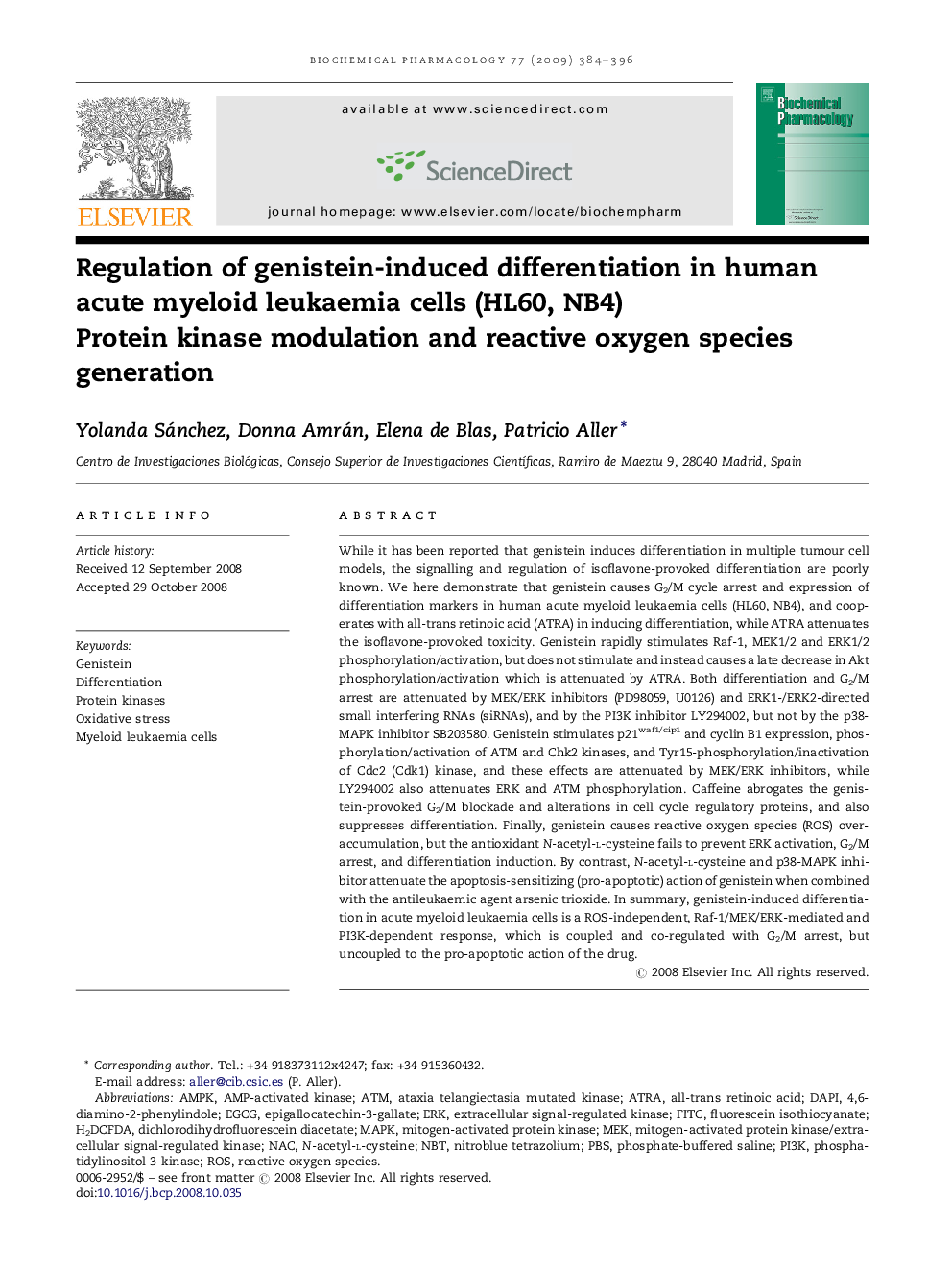| Article ID | Journal | Published Year | Pages | File Type |
|---|---|---|---|---|
| 2514293 | Biochemical Pharmacology | 2009 | 13 Pages |
While it has been reported that genistein induces differentiation in multiple tumour cell models, the signalling and regulation of isoflavone-provoked differentiation are poorly known. We here demonstrate that genistein causes G2/M cycle arrest and expression of differentiation markers in human acute myeloid leukaemia cells (HL60, NB4), and cooperates with all-trans retinoic acid (ATRA) in inducing differentiation, while ATRA attenuates the isoflavone-provoked toxicity. Genistein rapidly stimulates Raf-1, MEK1/2 and ERK1/2 phosphorylation/activation, but does not stimulate and instead causes a late decrease in Akt phosphorylation/activation which is attenuated by ATRA. Both differentiation and G2/M arrest are attenuated by MEK/ERK inhibitors (PD98059, U0126) and ERK1-/ERK2-directed small interfering RNAs (siRNAs), and by the PI3K inhibitor LY294002, but not by the p38-MAPK inhibitor SB203580. Genistein stimulates p21waf1/cip1 and cyclin B1 expression, phosphorylation/activation of ATM and Chk2 kinases, and Tyr15-phosphorylation/inactivation of Cdc2 (Cdk1) kinase, and these effects are attenuated by MEK/ERK inhibitors, while LY294002 also attenuates ERK and ATM phosphorylation. Caffeine abrogates the genistein-provoked G2/M blockade and alterations in cell cycle regulatory proteins, and also suppresses differentiation. Finally, genistein causes reactive oxygen species (ROS) over-accumulation, but the antioxidant N-acetyl-l-cysteine fails to prevent ERK activation, G2/M arrest, and differentiation induction. By contrast, N-acetyl-l-cysteine and p38-MAPK inhibitor attenuate the apoptosis-sensitizing (pro-apoptotic) action of genistein when combined with the antileukaemic agent arsenic trioxide. In summary, genistein-induced differentiation in acute myeloid leukaemia cells is a ROS-independent, Raf-1/MEK/ERK-mediated and PI3K-dependent response, which is coupled and co-regulated with G2/M arrest, but uncoupled to the pro-apoptotic action of the drug.
